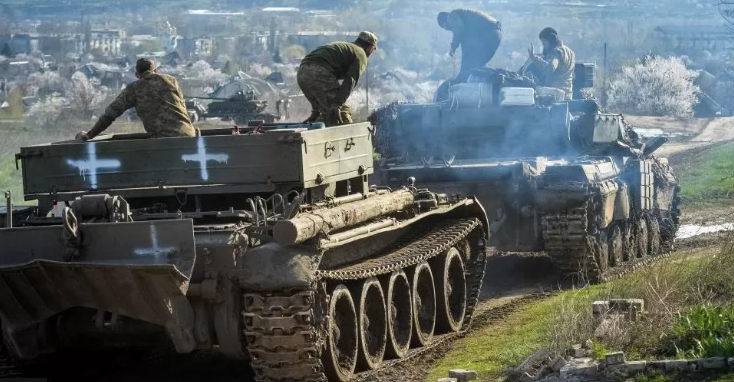(BBC News) Dozens of classified U.S. documents have been leaked and are circulating on the Internet.
Images of the classified files have appeared on messaging app Discord since February.
Complete with timelines and dozens of military acronyms, the documents, some marked “top secret”, paint a detailed picture of the war in Ukraine and offer information on China and allies.
Pentagon officials are quoted as saying the documents are real.
BBC News and other news organizations have reviewed some of the documents, and these are some of the key findings.
One document, dated March 23, refers to the presence of a small number of western special forces operating inside Ukraine, without specifying their activities or location. The U.K. has the largest contingent (50), followed by Latvia (17), France (15), the U.S. (14), and the Netherlands (1).
Western governments typically refrain from commenting on such sensitive matters, but this detail is likely to be seized upon by Moscow, which has in recent months argued that it is not just confronting Ukraine, but NATO as well.
Other documents say when a dozen new Ukrainian brigades – being prepared for an offensive that could begin within weeks – will be ready. They list, in great detail, the tanks, armoured vehicles, and artillery pieces that are being provided by Ukraine’s western allies.
One map includes a timeline that assesses ground conditions across eastern Ukraine as spring progresses.
According to the Washington Post newspaper, one document from early February expresses misgivings about Ukraine’s chances of success in its forthcoming counteroffensive, saying that problems with generating and sustaining sufficient forces could result in “modest territorial gains.”
Ukraine’s difficulties in maintaining its vital air defences are also analysed, with warnings from late February that Kyiv might run out of critical missiles.
Casualty figures are also listed. One slide refers to as many as 223,000 Russian soldiers killed or wounded, and as many as 131,000 Ukrainians.
Some Ukrainian officials have dismissed the leaks, suggesting they might constitute a Russian disinformation campaign. But there are signs of frustration and anger, too.
Presidential adviser Mykhailo Podolyak tweeted: “We need less contemplation on ‘leaks’ and more long-range weapons in order to properly end the war.”
The Washington Post obtained access to another document from mid-February, where they found that Egypt had plans to produce 40,000 rockets for Russia in secret.
The Post said President Abdul Fatah al-Sisi told officials to keep production and shipment secret “to avoid problems with the West.”
An official is quoted as saying he would “order his people to work shift work if necessary because it was the least Egypt could do to repay Russia for unspecified help earlier.” It is unclear what the earlier help refers to.
There is no indication that Egypt went ahead with the proposed sale to Russia. It’s not known if this was as a result of a direct warning from Washington. But Egypt is one of the largest recipients of U.S. security assistance, worth around $1 billion a year, which gives the U.S. administration considerable leverage.
An unnamed official quoted on Egyptian news channels described the allegation in the document as “utterly baseless,” and said Cairo did not take sides in the war.
The Kremlin meanwhile described the allegation as “just another canard.”
A classified document, seen by the BBC, reveals that South Korea was torn about selling weapons for use in Ukraine.
The report, based on signals intelligence, details a sensitive conversation between national security advisers.
South Korea is torn between U.S. pressure to send ammunition to Ukraine and its policy not to arm countries at war.
One of the advisers suggests sending the shells to Poland instead, to avoid appearing to have given in to the U.S.
As part of a resupply deal last year, Seoul insisted that the U.S. could not pass the shells on to Ukraine. Seoul has been reluctant to arm Ukraine, for fear of antagonizing Russia.
The leak has triggered security concerns in Seoul, with opposition politicians questioning how the U.S. was able to intercept such a high-level conversation.
The Post also found that Beijing tested one of its experimental missiles – the DF-27 hypersonic glide vehicle – on February 25.
The missile flew for 12 minutes over a distance of 2,100 km, according to the documents.
The Post reported that the experimental missile had a “high probability” of penetrating U.S. ballistic missile defence systems.
Their analysis also included details of a new Chinese warship and a rocket launch in March that would enhance China’s mapping capabilities.


